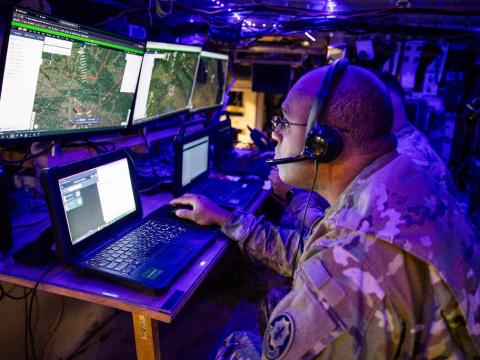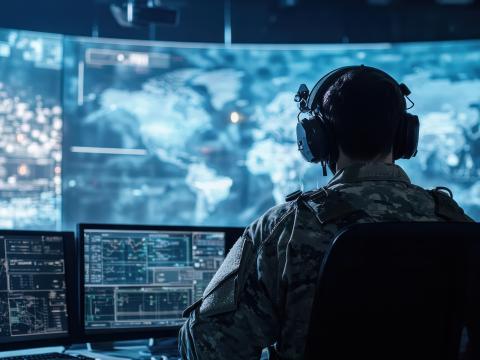The Never-Ending Journey To Revolutionize Command and Control
The U.S. Army’s monumental attempt to modernize its command post architecture is forging ahead as Next Generation Command and Control (NGC2) is advancing to the prototyping phase. During this step, individuals associated with the movement will dedicate their time toward learning about and researching capabilities that they could use to bolster the infrastructure. Team members will also seek feedback from soldiers to better understand their demands and whether crews need to make any changes to existing systems that can make the warfighters’ jobs easier. Completing this phase will ideally close the large gap that Army officials are facing between them and a completed production environment, which is something they are nowhere close to putting into place, according to Brig. Gen. Michael Kaloostian, director, Command and Control Cross-Functional Team, Army Futures Command.
“This is all about learning, and we’re learning with some of our best commanders in the Army telling us, based on warfighter feedback, where we need to go with this capability,” Kaloostian said during a panel discussion at TechNet Augusta 2025. “Because I can tell you right now, what we have is not perfect. It’s not even close. So, we are building and becoming better.”
Fortunately for the Army, leaders are seeing improvements made regarding NGC2. Kaloostian added that their capability is continuously making strides. He noted that it is more advanced than it was at Project Convergence Capstone 5 in March and April 2025, and he expects it to show improvements during Project Convergence Capstone 6.
But as adversarial threats become more advanced and sophisticated, it is crucial that NGC2 crews constantly update the infrastructure to ensure it is ready for any attacks that might come its way. Because of this, the journey to revolutionize command and control is never-ending, according to Kaloostian.
“We’re also adding capability, because NGC2 will never be finished,” Kaloostian said. “We are always adding capability. We’re always looking to see how we’re going to be able to quickly on-ramp and off-ramp capability as the mission requires and as the threat evolves.”
“We’re going to continuously evolve the software, because this is a data-centric thing,” Kaloostian added. “We are evolving the data layer. We’re going to add in more capability. We’re going to add more front-facing applications to replace those warfighting functions. That’s where we’re going; that’s the difference.”
Furthermore, this shift toward data-centric command and control posts from network-centric command and control posts is vital to winning tomorrow’s war. Leaders expect this transition to enable commanders to access a plethora of data while also having the ability to transfer that data, which can allow commanders to make game-changing decisions quickly. Possessing this capability could determine who wins the future fight, according to Kaloostian.
“The force that is able to synthesize and adjust that data the fastest and make sense of it is the force that’s going to win tomorrow’s war,” Kaloostian said. “We are not going to outman China. We’re not going to outgun China. The only way that we’re going to do this is going to be [by having the ability] to have better battlefield situational awareness and have a better decision-making capability than China, so that is the key.”
TechNet Augusta is organized byAFCEA International with help from the U.S. Army Cyber Center of Excellence. SIGNAL Media is the official media of AFCEA International.




Comments